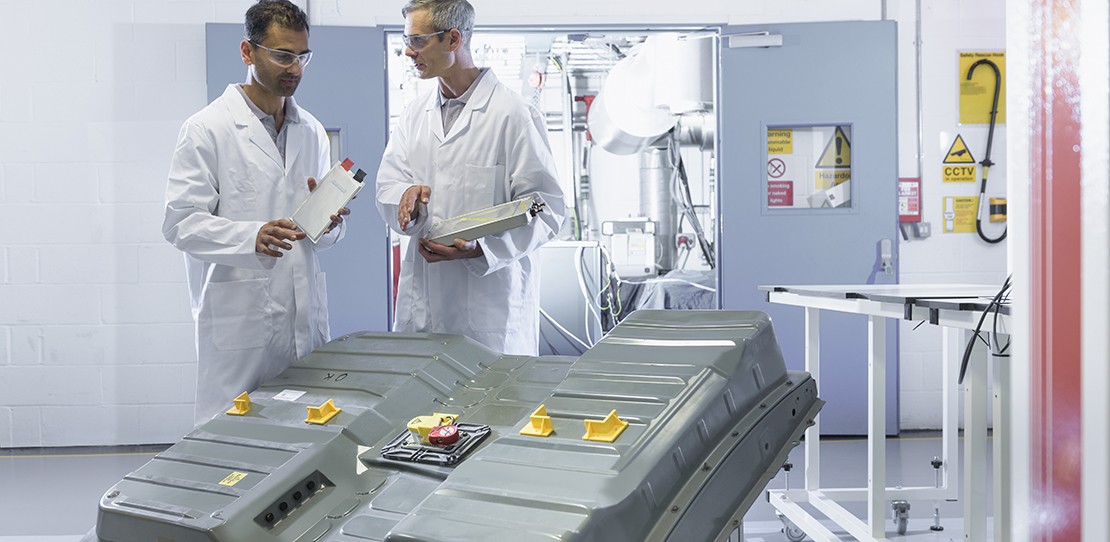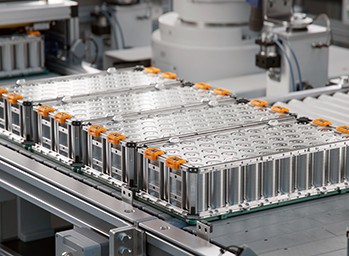
Considering EVs? Consider Them Faster
EXPERT OPINION
TRANSPORTATION | 6 MINUTE READ
NI’s test solutions help EV automakers meet production targets, maximize quality and performance, minimize risks of delays or recalls, and deliver innovation to the road faster.
AUTHOR: Arturo Vargas Mercado, Industry Marketing Manager, NI
For me, electric vehicles (EVs) have felt like a luxury—and a risk—rather than an everyday tool. Between my range anxiety and my inexperience with EVs, I’ve deemed myself a potential late adopter of EV technology. This means I can still take my time considering a switch to EVs, right? Maybe not.
Automakers are making it very hard to wait, and that’s a good thing. For example, General Motors announced that its Cadillac lineup will be all electric by 2030. In addition, Honda said it will sell only EVs and hybrids in Europe after 2022 and phase out all gas cars by 2040.1 Also, just from CES 2022, I counted no fewer than six big announcements related to new EVs hitting the road soon. Those are big commitments considering that EVs don’t have a century of iterative innovation like combustion cars and that regulations and technology are constantly evolving.
In this uncertain environment, automakers are, at different degrees, managing to meet the accelerating pace by making these firm, public commitments and investing accordingly. But ramping up new EV technologies, implementing faster product development cycles, and maximizing quality take more than commitment and investment.
This sprint to meet EV production targets involves the race to produce the best battery in terms of safety and performance. Battery manufacturers who want to claim the longest range and fastest charge need to conduct extensive testing to reach these goals.
How Hard Can Battery Test Be? Very.
Consider an EV manufacturer with massive walk-in chambers to house the batteries during validation. Its engineers test for capacity, peak power, thermal runaway, overcharge, temperature cycling, protection systems, high potential (hipot), pressure decay, imbalance charge, short circuit, and dozens of other variables over multiple temperature ranges. At the same time, they test for compliance with IEC 62660, SAE J2464, and other standards. Managing the list of tests to perform is already a big challenge by itself.

This manufacturer falls somewhere in between the Complex Test Cell and the Multicell Lab (Figure 1) categories. One of its main concerns is scaling while managing the megawatts of power, multiple batteries running different tests, high-channel counts, test cell control, the data from results and the facility, and the coordination of test execution (which sometimes runs continuously for as long as six months) for all the packs and modules. Its engineers faced questions such as the following:
- How do we scale from a single test cell to large, multisite, complex test laboratories?
- Do we have the right level of test-result traceability for analytics and decision making?
- Is our test repeatable to the point that we can rerun it, even years later?
- Can we efficiently reconfigure our test cells for new batteries or for more of them?
- Are we working as efficiently as possible, or are we hindered by our existing technologies and processes?
With current time-to-market and EV scrutiny conditions, the way companies and engineers approach test can separate the winners from the losers. Unfortunately, many companies are forced to persist through testing with disparate, disconnected tools that, at best, are cumbersome and time-consuming to manage.
Figure 1: Scalability is a multidimensional, interdependent problem that disparate, disconnected technologies cannot solve.
It Can Get Easier
At NI, we understand this almost impossible situation, and we’re making our own commitments so automakers can meet theirs. One such commitment is to connect their test in multiple dimensions.
The typical battery lab setup in FIGURE 02 features multiple components that need to operate in a coordinated way. Tasks as simple as charging and discharging the battery with the cycler need to perfectly synchronize with the conditions inside the environmental chamber, the test procedures, the data capture, the measurements, and the communication with the battery management system (BMS).
Figure 2: A typical battery test lab setup includes the cycler, chamber, measurements, chiller, and software.
For example, NI’s Battery Test System (BTS) works as a measurement rack and as the software connected orchestrator of the test to enable customization and automation. NI SystemLink™, BTS software, and data analytics tools work together to ensure test-result traceability, test repeatability, and proper management of the whole test-cell operation. From the battery cycler to the measurements on the pack/module, running tests with NI’s software helps catch defects before they become catastrophic issues, improves product design, and ensures safety and quality.
To offer a more complete solution to the market, we’ve expanded our portfolio of EV power level test solutions that provide our customers with critical power-level test capabilities. The expansion came about in multiple ways, one of which was the acquisition of NH Research Inc. (NHR).
Through NHR, NI added capabilities for battery test, battery emulation, grid simulators, and AC/DC loads and sources. NHR’s power test equipment performance, modularity, safety, flexibility, and scalability complement NI’s existing battery test solutions in a way that addresses most of the challenges stated above. Because NI already offers the measurement capabilities and software for automating and customizing test and data analysis, the integration of NHR completes the power electronics required to test battery or battery-related systems in a fully software-connected toolchain for applications such as:
- HIGH-POWER BATTERY MODULE AND PACK TESTING—By precisely handling power to and from the battery (cycling), engineers can test batteries as if they were in operation. Following profiles of acceleration, braking, charging, environmental conditions, and more, engineers validate their batteries’ range and performance down to the last mile. They also test for algorithms that improve the safety and performance of the whole EV drive train.
- BATTERY EMULATION—Engineers can test how well their battery, inverter, motor, onboard charger, or even full drive unit meets control, safety, and durability requirements using power electronics devices to emulate the battery behaving any way they need to run the test.
The combination of NI’s flexible, software-connected EV test platform with the power conversion and electrification test systems expertise of NHR facilitates rapid responses to changing test needs while maintaining quality and empowering engineers to overcome their test challenges. Our goal is to help EV automakers accelerate product development to deliver their products to market faster so they can meet their own goals and commitments.
We believe in the long-term benefits EVs offer, and, just like the automotive companies out there, we invest accordingly to make them a reality. In other words, we want to make it easier for automakers to get to market and make it harder for people like me to wait before going electric. To learn more, visit our Electric Vehicle Battery Test page.
______________________________________
1 Every Automaker's EV Plans Through 2035 and Beyond, Forbes, October 4, 2021.



